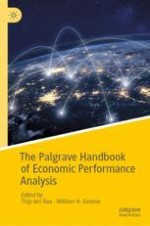2019 | OriginalPaper | Buchkapitel
Modelling Environmental Adjustments of Production Technologies: A Literature Review
Externalities and Environmental Studies
verfasst von : K. Hervé Dakpo, Frederic Ang
Erschienen in: The Palgrave Handbook of Economic Performance Analysis
Aktivieren Sie unsere intelligente Suche, um passende Fachinhalte oder Patente zu finden.
Wählen Sie Textabschnitte aus um mit Künstlicher Intelligenz passenden Patente zu finden. powered by
Markieren Sie Textabschnitte, um KI-gestützt weitere passende Inhalte zu finden. powered by
